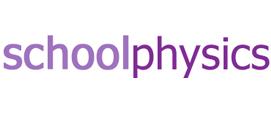Experimental equipment and techniques
This T level topic on experimental equipment and techniques starts with a range of equipment that is generally available in school and college laboratories, but that may have been previously used with little explanation or discussion. There are a lot of possible activities for using the equipment in other areas of the specification and so it may be helpful to look at practical tasks across the course to introduce the why it is used now (the focus in this area of the specification) and then work towards competence in the use of various pieces when required in other sections. There is then a section on theory on how to use a microscope and aseptic technique that would be enhanced by a practical approach with explanations of key details in the procedures in different contexts and experiments.
Whilst this list provides a source of information and ideas for experimental work, it is important to note that recommendations can date very quickly. Do NOT follow suggestions which conflict with current advice from CLEAPSS, SSERC or recent safety guides. eLibrary users are responsible for ensuring that any activity, including practical work, which they carry out is consistent with current regulations related to Health and Safety and that they carry an appropriate risk assessment. Further information is provided in our Health and Safety guidance.
Microbes in Yoghurt
Although aimed at KS3, this activity from the Chilled foods association uses yogurt smears with Gram staining to view microbes and so could be used as a starting point microbiology practical in food science and extended to look at magnification and staining techniques in this context. There is also a maths worksheet that could be used for homework on SI units.
Measuring instruments
A simple challenge practical activity from School physics that would be useful as an introduction to a lesson on measuring length with different scales and how you could go about doing this. Students need to select the most appropriate way of measuring certain everyday items and then this could be a springboard for further discussion .
A-level set practicals: dissection and microscopy of a plant stem
This practical from Science & Plants for Schools (SAPs) is a longer activity that could be used to consolidate and bring together microscopic techniques, including use of staining and an eyepiece graticule, after initial teaching. The emphasis could be taken off the plant tissue itself and students asked about how they could get the best sample and view of the tissues themselves and even help design the experiment based on improving the initial student sheet given.
Basic Practical Microbiology: a Manual
A manual from the Microbiology Society that is a helpful background for teachers or for reading by students, as long as up-to-date guidance is sought from CLEAPSS. Students could even produce their own versions of the instructions using their photographs for their records and to focus on the detail in the procedures.
Martian Death Rays
An ESERO (European Space Education Resource Office) resource from the 'We Are Aliens!' Mars collection that gives a really motivating activity to look at aseptic technique in an astrobiology context. There is a video that can be used for teachers, technicians or students themselves and a worksheet that can be used during the activity or adapted further.
CLEAPSS Buying Guides
CLEAPSS buying guides could be used here in a lesson for students to annotate the features you may need at different ages in school with reasons e.g. why would you need a draft shield on a balance for older students? What advantage would that give? The guides cover a variety of equipment that is mentioned in the T level specification such as autoclaves and fume cupboards that students may not have thought about in much detail previously.
Nanotechnology *suitable for home teaching*
A 'Catalyst' article aimed at students aged 14-19 that introduces the idea of nanotechnology and some possible pros and cons of its use. It could be helpful reading for teachers or pre-reading for students, perhaps being asked to produce a summary for use in lessons. Students could also make a guide to nanotechnology by adding to this information with specific techniques used to detect and handle nanomaterials in a lab.
Validating experiments- controls
This accessible video and explanation using simple real-life examples could be a helpful starter or independent pre-reading for a lesson that then looks at positive and negative controls in actual experiments. There are also other videos on the website covering different topics that may be useful in the T level, such as 'Bias'.
Atomic Force Microscope (AFM)
A quick magazine article that introduces Atomic Force Microscopy in a simple way. This is a useful start to look at viewing objects on the nanoscale and could be a precursor to speaking to a STEM ambassador or finding out more about how this technique is used in industry or research.
Atomic clocks- NPL
A fascinating article about atomic clocks from the National Physical Laboratory (NPL) that includes great examples on when we need to be really precise with timing, with some surprising examples! This would be fantastic background reading for a teacher planning a lesson, or interesting for any students who are wanting to go into metrology after the course.







